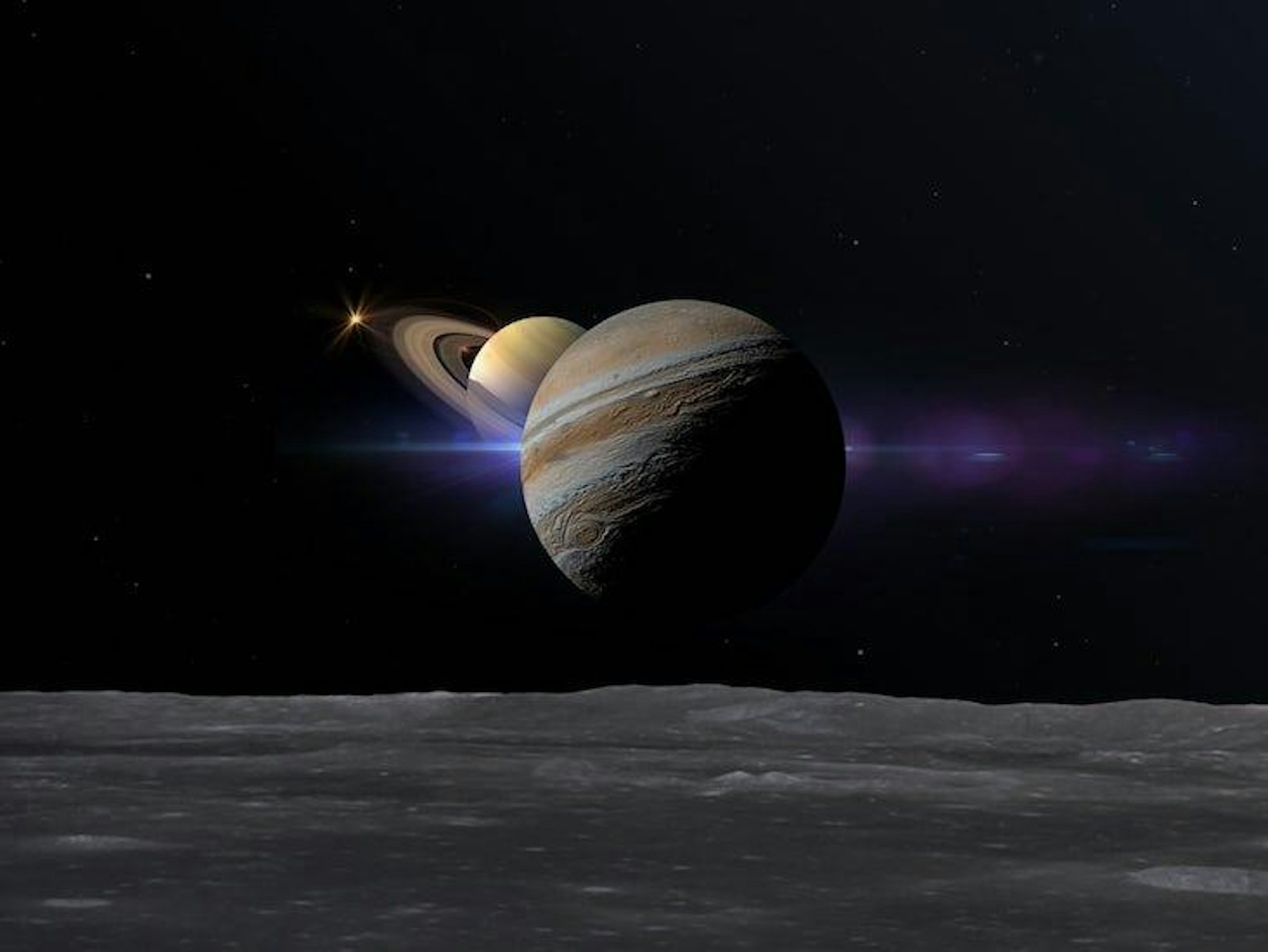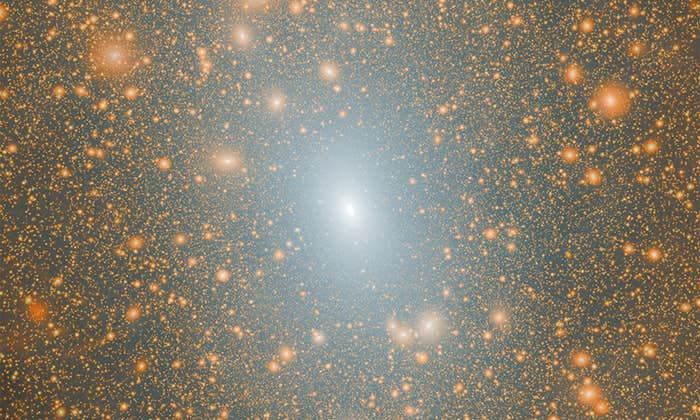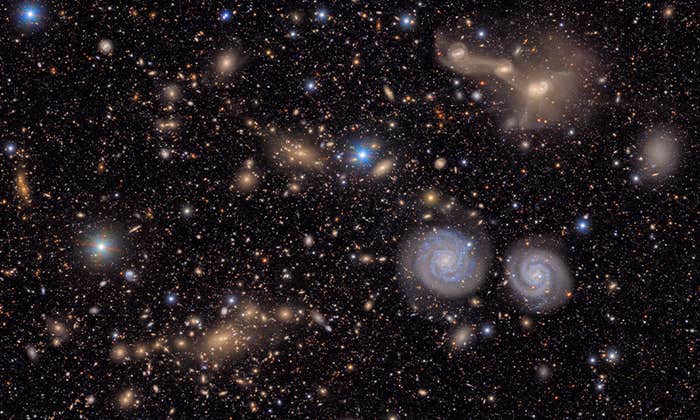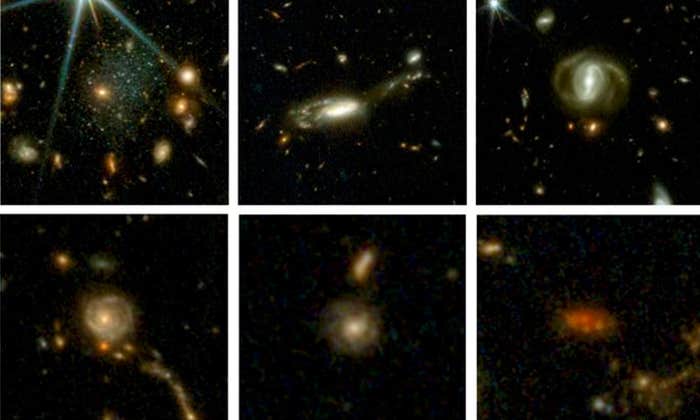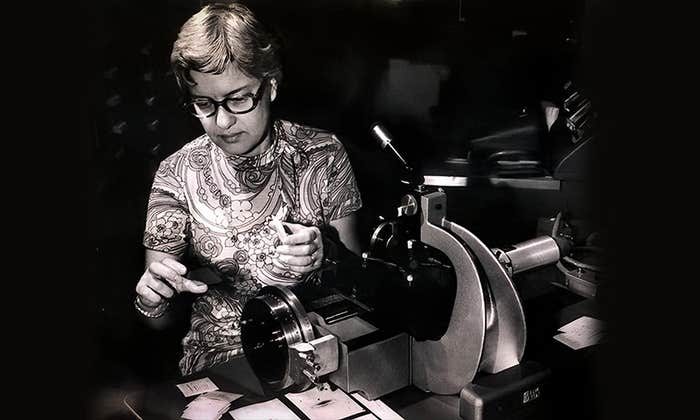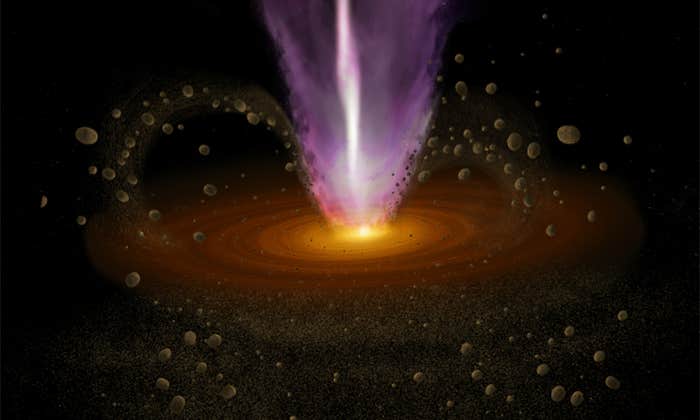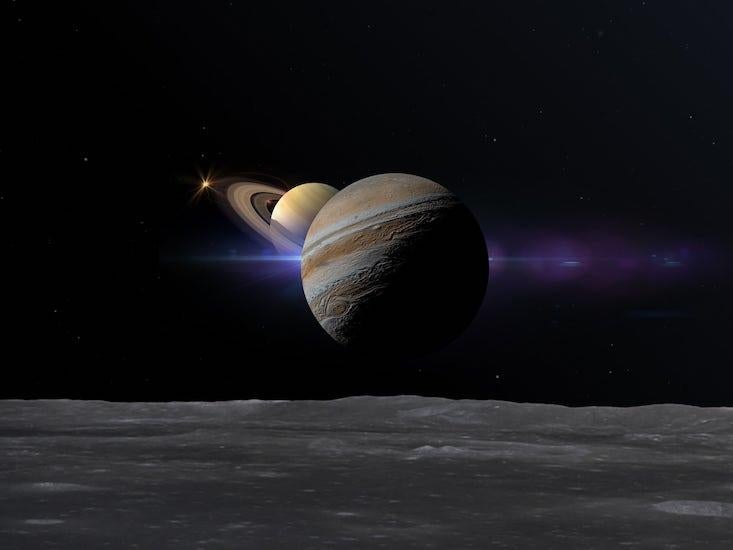
Today, December 21, Jupiter and Saturn will appear extremely close to each other in the sky, less than a tenth of a degree apart, about one fifth the width of the full Moon.1 “Conjunctions” like this happen all the time but, for us, here on Earth, it’s special because—though the planets will still be more than a half-billion kilometers apart—from our point of view, the planets could almost touch.2
A conjunction is a good time to reflect on our cosmic heritage, and on the long shadows cast by the gas giants. After all, Jupiter and Saturn influenced Earth’s growth and evolution. Evidence suggests there were at least three occasions on which they (Jupiter especially) chose Earth’s evolutionary path, some 4.5 billion years ago, helping to shape the planet we know and love today.
The wee infant Earth was just sitting there growing
Some rocky things flying by, crashing and glowing.
But far from the Sun, way out in the cold
The giants were stirring. A force to behold!3
Planets grow within swirling disks of gas and dust around young stars. We have images of these disks taken with our biggest telescopes, especially the giant radio telescope ALMA. Here is one of ALMA’s classics:
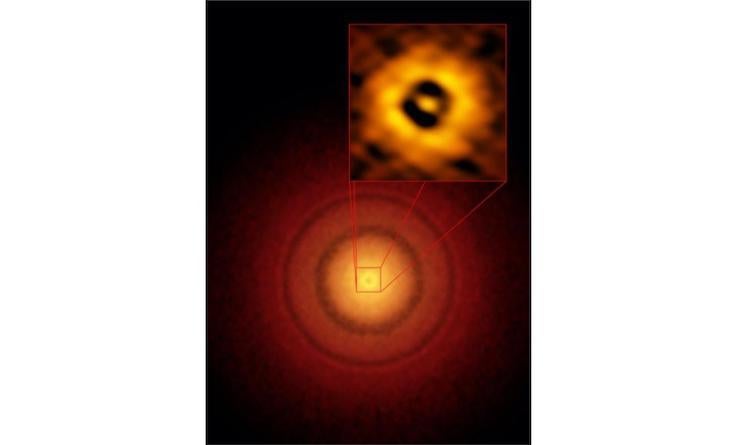
Jupiter starved the growing Earth. This may sound like a bad thing, but without Jupiter, Earth would probably have become a colossal “super-Earth” and moved inward, onto a roasting-hot orbit close to the Sun. Not great for life.
Planets grow out of dust. It drifts around in a disk, then piles up to form 100 kilometer-scale “planetesimals,” the real building blocks of the planets. Think of these like the potato-shaped asteroids from Star Wars—just bigger, farther apart, and without the giant space slugs. The rings in the ALMA image are pile-ups of sand-sized dust, where these objects may be forming right now.
Planetesimals grow further by bashing into each other, and also by sweeping up dust drifting inward. When a growing planetesimal gets massive enough, it blocks the drifting dust, not only starving itself but also blocking the dust from getting to any planetesimal closer to the Sun. These planetesimals can keep growing by self-collisions but not by any new dust originating in the outer solar system.
Jupiter’s growing core—a super-big planetesimal about ten times the mass of Earth—may have done exactly that. It grew big enough, fast enough, to stop the flow of dust. Scientists don’t know exactly why Jupiter’s core formed so much faster than Earth’s, but the reason likely has something to do with the fact that Jupiter started forming further from the Sun, where (sticky) ices could exist and contribute to its growth.
Meteorites corroborate this idea. The thousands of meteorites in NASA collections can be divided into two main classes, based on their isotopes—the relative amounts of the same elements with different numbers of neutrons. These meteorites are made out of dust that’s just the right size to drift really fast within the disk. Yet the two types of meteorites didn’t mix. Why not? Jupiter’s dust-blocking core.
Our system was neatly just sliced right in two
As Jupiter’s core stopped the dust flowing through.
If not for this, Earth would have just kept on growing
And wound up so close to the Sun we’d be glowing!
Jupiter and Saturn also stunted Mars’ growth. The Red Planet gets a lot of press, but it’s a runt. Mars is nine times less massive than its closest neighbor, Earth. Decades of computer simulations (starting in the late 1970s) have shown that, without an outside perturbation, Mars would have grown to be about as big as Earth—even with Jupiter blocking the flow of dust into the inner solar system.
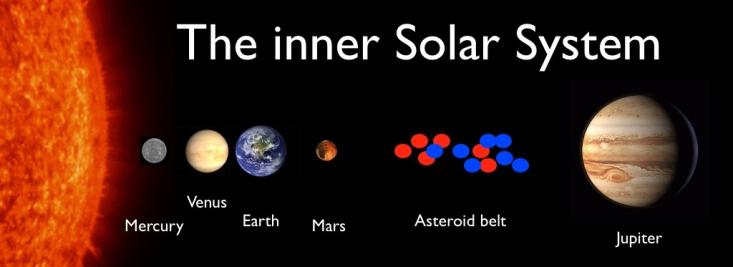
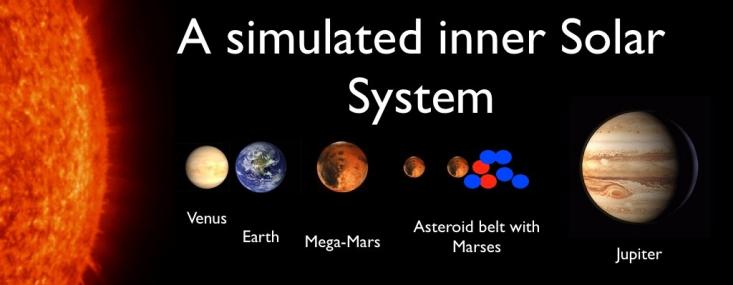
So why isn’t Mars bigger? There are a few different ideas out there. One scenario—called the Grand Tack—has Jupiter’s orbit shifting, or “migrating,” as it grew. On its own, Jupiter would have migrated inward and probably ended up somewhere close to Earth’s orbit, which is where most of the Jupiter-mass planets around other stars are found.
This is where Saturn comes in. Jupiter and Saturn together migrate outward instead of inward. This is a neat hydrodynamical effect that takes place when two gas giants are close to each other in the same disk, and the inner one is more massive than the outer one. The flow of gas changes and creates a pileup interior to the inner planet’s orbit, which acts to push both planets outward. Like two good friends, they have the wherewithal to go against the flow and migrate outward together, whereas each would migrate inward on its own.
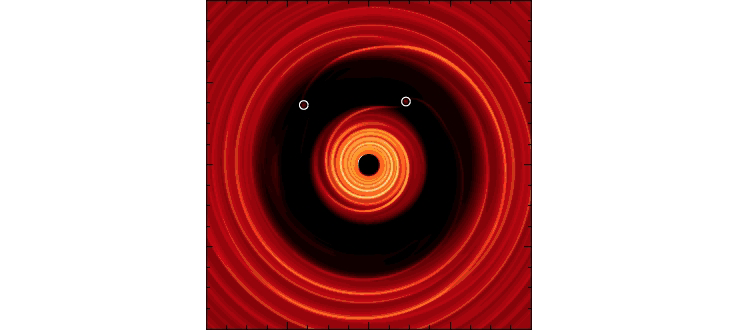
Jupiter and Saturn’s migration emptied out Mars’ feeding zone, stunting its growth. As long as their migration turned around (“tacked” in sailing jargon) early enough, the gas giants would not have disrupted Earth’s growth.
Like dinosaurs, Saturn and Jupiter roamed
They sculpted this system that humans call home
Their orbits first shrank, then shifted and grew.
Our Earth was constructed from rocks they plowed through.
We may be observing something similar in another system almost 400 light-years away. The disk around the star PDS70 appears to be shaped by two giant baby planets, locked in an orbital resonance, and migrating around right now!
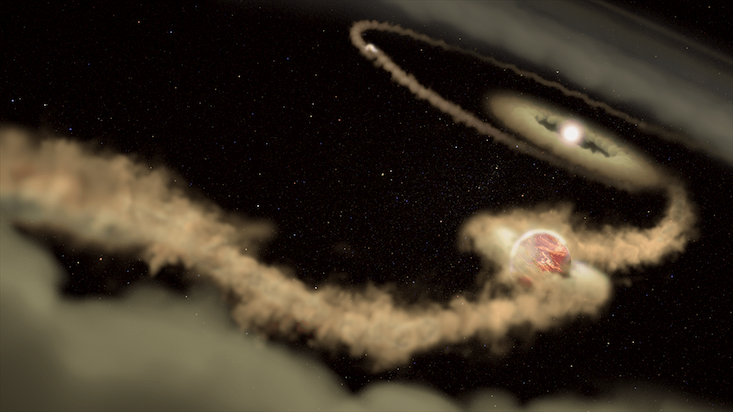
The gas giants eventually became unstable, pelting all of the other, more inner planets with stray rocks and ice. There are several pieces of circumstantial evidence leading scientists to suspect that our solar system suffered a dynamical instability, an event during which the giant planets’ orbits changed in sudden, dramatic fashion. For instance, the giant planets’ orbits are not circles, but modestly stretched out ellipses. The Kuiper belt is almost empty, yet Pluto and Eris, another dwarf planet (discovered in 2005), needed a lot more mass to grow as big as they are. The giant planets are surrounded by clouds of “irregular satellites” that seem to have been captured from somewhere else. The orbits of Jupiter’s Trojan asteroids are strangely tilted. The list goes on.
The Nice model, a scenario of how our solar system dynamically evolved, developed in the French city of the same name, proposes that the giant planets’ orbits went unstable hundreds of millions of years after the planets formed (more on that later). The instability may looked something like this:
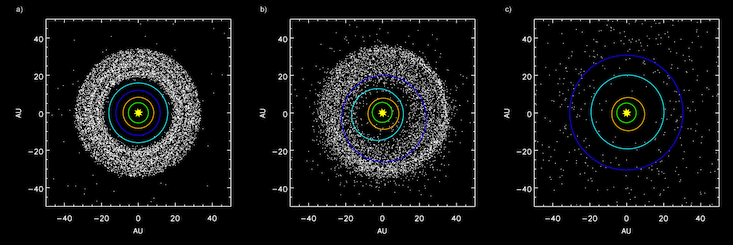
During the instability, the ice giants, Uranus and Neptune, were kicked all over the place. The outer disk of planetesimals—basically, a huge pile of leftover comets—was almost completely cleared out. Those leftovers rained down on the planets and a few were captured (like the irregular satellites).
And later on there was a big instability
This time the giants expressed their hostility
The ice giants’ orbits were strongly affected
An extra one may have been fully ejected!
(The Earth was bombarded; no planet protected.)
There is a new twist in this story related to the timing of these events. As you know, the Moon is covered in craters. Since the 1970s, the ages of craters were thought to show a big spike in the rate of impacts hundreds of millions of years after the planets formed (remember, that was still billions of years ago). This was called the “late heavy bombardment.”
New analysis shows that this spike is probably just the tail end of an early bombardment, the one that grew the planets in the first place. Not a “late” heavy bombardment. This doesn’t call the past instability into question, because it can explain so many features of the solar system at the same time. But it must have happened much earlier, maybe during the growth of the rocky planets. There’s a cherry on top: New simulations show that an early giant-planet instability can even explain why Mars is smaller than Earth.
In modeling events billions of years ago, we are really only constrained by two things: the laws of physics (and available evidence) and our imaginations.
We don’t have a time machine, can’t see the past
But models can answer some questions we’ve asked
To test our ideas, we use simulations
On giant computers, with huge calculations.
Some people like to call Jupiter and Saturn the “architects” of the solar system, as though they had a clear plan for how our system should turn out. Not us. We think of the gas giants as bullies that pushed Earth around and made a lot of decisions for us.
Some even call Jupiter Earth’s “protector.” This is because, over the past 4 billion years, its massive gravity has scattered comets and asteroids away that might otherwise have hit our planet. But on closer inspection, this doesn’t hold up. Jupiter only protects Earth from comets that Jupiter put on Earth-crossing orbits in the first place. It’s like a bully—albeit, quite a beautiful one—asking for a handout to protect you from his fist.
Sean Raymond is an American astrophysicist working at the Bordeaux Astrophysical Laboratory in France. He also writes a blog at the interface of science and fiction (planetplanet.net), and recently published a book of astronomy poems. The poems in this post were written by him.
Sebastiaan Krijt is a Lecturer in Astrophysics at the University of Exeter in the U.K.
We hope we’ve given you something to think about as you gaze up at Jupiter and Saturn during this grand conjunction. If you’re looking for more information on how to watch the conjunction yourself or want to learn more about Jupiter and Saturn, check out http://jupitersaturn2020.org (including this video we made).
Footnotes
1. For how to view the conjunction, see here.
2. For a history of conjunctions, see here.
3. For more astronomy poems by Sean Raymond, see here.















